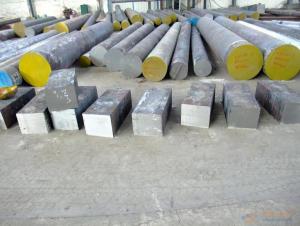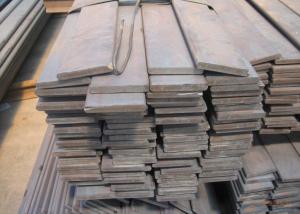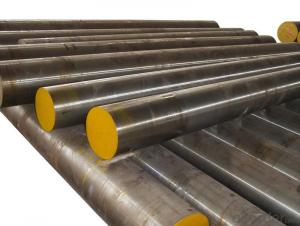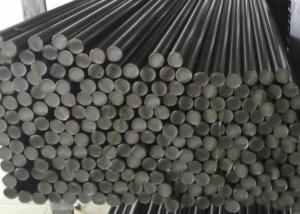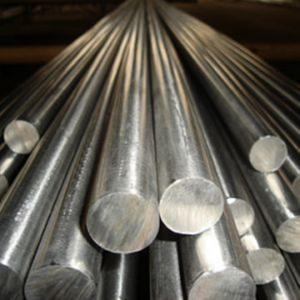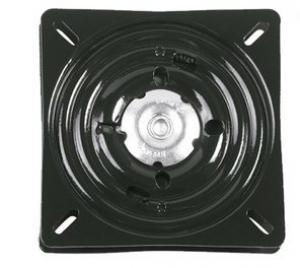DIN 1.7225/AISI 4140 Mould Steel Round Bar
- Loading Port:
- Shanghai
- Payment Terms:
- TT OR LC
- Min Order Qty:
- 3 m.t.
- Supply Capability:
- 100000 m.t./month
OKorder Service Pledge
OKorder Financial Service
You Might Also Like
Item specifice
DIN 1.7225/AISI 4140 Mould Steel Round Bar
Details Information of DIN 1.7225/AISI 4140 Mould Steel Round Bar
| Name | DIN 1.7225/AISI 4140 Mould Steel Round Bar |
| Shape | Round Bar/Square Bar/Flat Bar/Plate/Wire |
| Standard | GB/ASTM/SAE/AISI/DIN/JIS/EN/BS |
| Surface Treatment: | Black/Peeling/Polished/Machined |
| Delivery Condition: | Hot Rolled or Forged/Peeled or Black Surface |
| Test | SGS/UT 100% Elements Testing |
| Certificate: | ISO/Mill Certificate |
| Service: | 24 hours online service / |
| more than 20 years trading and manufacture | |
| Quality Assurance: | the third party inspection, such as SGS, BV, TUV…etc. is acceptable |
| Packaging Details: | Seaworthy Packaging or as per customer's packing instruction |
| Carbon structure round bar | Q195 Q235A Q235B 10# 20#-55# S45CB |
| Low alloy high strength round bar | Q345A/Q345C/Q345D Q345B Q345E |
| Alloy structure round bar | SAE51B20 20Cr 40Cr 40CrV 20CrMo/30CrMo/35CrMo/42CrMo 20CrMoA/30CrMoA/35CrMoA/42CrMoA/42Cr ML20CrMo/ML30CrMo/ML35CrMo/ML42CrMo B7/SCM435-440 20MnTiB 20CrMnMo 20CrMoH 42CrMoH 40MnB/40MnBH 30Mn2-40Mn2 27SiMn 50CrVA 30CrMnTi |
| Pinion steel | 20CrMnTi 20CrMnTiH 20CrMnTiHCS/20CrMnTiHLD Q20CrMnTi-1/Q20CrMnTi-2 |
| Sucker rod | 20-35CrMoA |
| Free-cutting steel | GT1215S |
| Spring steel | 60Si2MnA 65Mn |
| Ball bearing steel | GCr15 |
Chemical Composition of DIN 1.7225/AISI 4140 Mould Steel Round Bar
| C | Si | Mn | P | S | Cr | Ni | Cu |
| 0.17-0.24 | 0.17-0.37 | 0.35-0.65 | ≤0.035 | ≤0.035 | ≤0.25 | ≤0.25 | ≤0.25 |
| Tensile strength (σb/MPa) | Yield strength (σb/MPa) | Elongation (δ5/%) |
| ≥410(42) | ≥245(25) | ≥25 |
Company Introduction of DIN 1.7225/AISI 4140 Mould Steel Round Bar
CNBM International Corporation is the most import and export platform of CNBM group(China National Building Material Group Corporation) ,which is a state-owned enterprise, ranked in 270th of Fortune Global 500 in 2015.
With its advantages, CNBM International are mainly concentrate on Cement, Glass, Iron and Steel, Ceramics industries and devotes herself for supplying high quality series of refractories as well as technical consultancies and logistics solution.

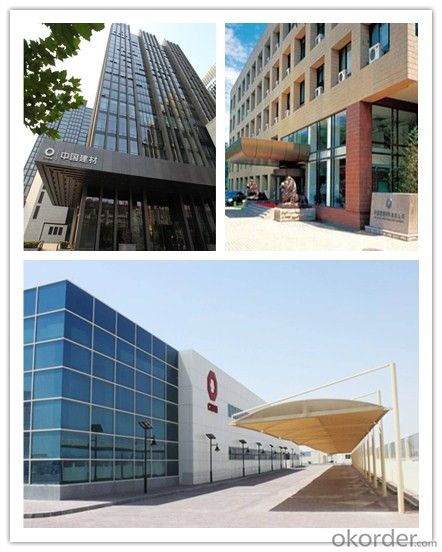
Certificates of DIN 1.7225/AISI 4140 Mould Steel Round Bar
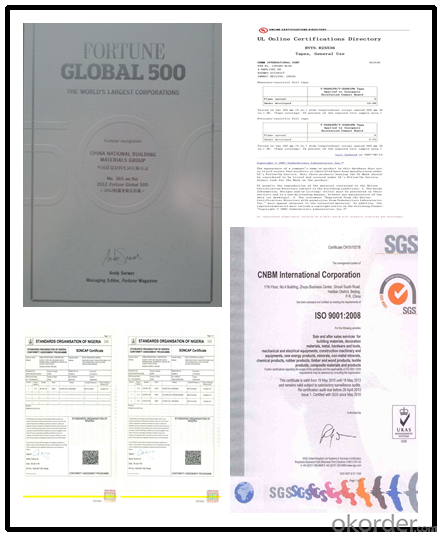
Packaging & Delivery of DIN 1.7225/AISI 4140 Mould Steel Round Bar
Packaging Detail | Sea worthy packing /as per customer's packing instruction |
Delivery Detail | 15 ~ 40 days after receiving the deposit |
Products show of DIN 1.7225/AISI 4140 Mould Steel Round Bar
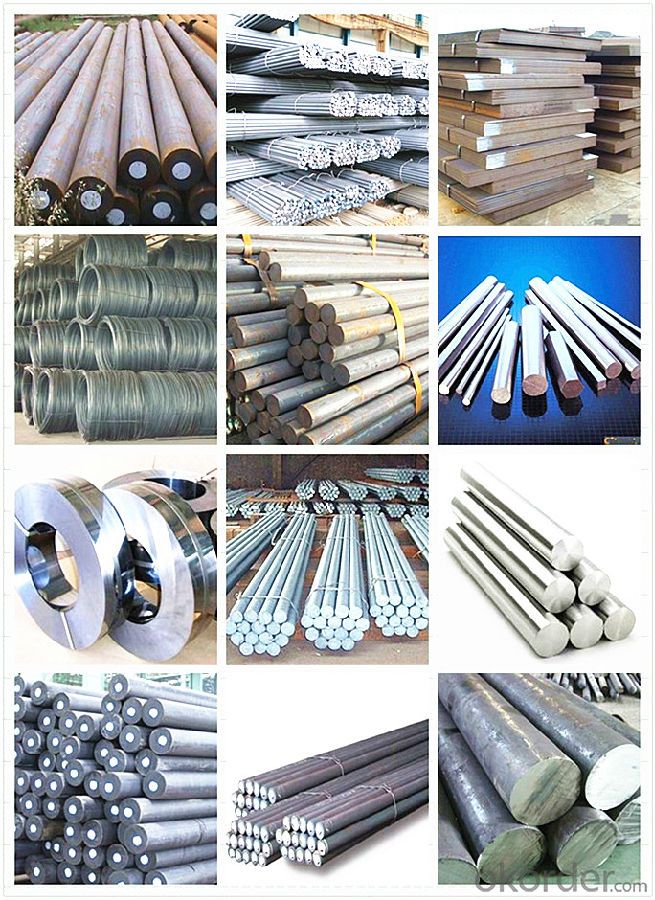
FAQ
Are you a trading company or manufacturer? | Manufacturer |
What’s the MOQ? | 3 metric ton |
What’s your delivery time? | 15-35 days after downpayment received |
Do you Accept OEM service? | Yes |
what’s your delivery terms? | FOB/CFR/CIF |
What's the Payment Terms? | 30% as deposit,70% before shipment by T/T |
Western Union acceptable for small amount. | |
L/C acceptable for large amount. | |
Scrow ,Paybal,Alipay are also ok | |
Why choose us? | Chose happens because of quality, then price, We can give you both. Additionally, we can also offer professional products inquiry, products knowledge train (for agents), smooth goods delivery, excellent customer solution proposals. |
What's your available port of Shipment? | Main Port, China |
What’s your featured services? | Our service formula: good quality+ good price+ good service=customer's trust
|
Where are your Market? | Covering more than 160 countries in the world |
- Q:How is precipitation-hardening steel used in the aerospace industry?
- Precipitation-hardening steel is extensively used in the aerospace industry due to its exceptional strength-to-weight ratio and high corrosion resistance. It is employed in critical components such as aircraft structures, landing gears, turbine blades, and fasteners. The steel's unique property of being able to strengthen through a precipitation process allows for the manufacturing of lightweight and durable parts, resulting in improved fuel efficiency, enhanced performance, and increased safety in aircraft operations.
- Q:What are the main factors affecting the formability of special steel?
- Several factors influence the formability of special steel, similar to other types of steel. These factors encompass the composition, microstructure, mechanical properties, temperature, and strain rate of the steel. The composition of special steel plays a vital role in determining its formability. The presence of alloying elements, such as chromium, nickel, molybdenum, and vanadium, can significantly impact the steel's ability to be shaped. These elements have the power to modify the steel's strength, ductility, and resistance to deformation. Another crucial factor influencing the formability of special steel is its microstructure. Fine-grained steels generally exhibit superior formability compared to coarse-grained steels. Additionally, the existence of non-metallic inclusions, like sulfides and oxides, can act as stress concentrators and promote crack formation, thereby influencing formability. The mechanical properties of special steel, including yield strength, tensile strength, and elongation, directly affect its formability. Steels with higher yield strength typically pose greater difficulty in shaping as they require more force for deformation. However, steels with high elongation can undergo more significant plastic deformation before failure, making them more formable. Temperature is also a critical factor impacting the formability of special steel. Elevated temperatures enhance the steel's ductility and make it easier to shape. This is due to the reduction in yield strength and increased movement of dislocations within the crystal structure. However, excessively high temperatures can lead to grain growth, negatively impacting formability. The strain rate, which refers to the rate of deformation applied to the steel, also influences formability. Higher strain rates can result in strain hardening, making the steel stronger but less formable. Conversely, lower strain rates allow for greater plastic deformation and improved formability. In conclusion, achieving the desired formability and shaping capabilities of special steel in various applications necessitates an understanding and optimization of its composition, microstructure, mechanical properties, temperature, and strain rate.
- Q:How does special steel contribute to reducing material waste?
- Special steel contributes to reducing material waste through its unique properties and manufacturing processes. Firstly, special steel is known for its high strength and durability, which allows for the creation of products that have a longer lifespan and require less frequent replacement. This reduces the amount of material waste generated from constantly discarding and replacing worn-out products. Moreover, special steel is often designed to be easily recyclable. Its composition and manufacturing techniques allow for efficient recycling, enabling the reuse of steel scrap and minimizing the need for new raw materials. This significantly reduces material waste by preventing the accumulation of discarded steel products in landfills. Additionally, special steel's versatility and customization options play a vital role in reducing material waste. By tailoring the steel's composition and properties to specific applications, manufacturers can optimize the use of materials and avoid unnecessary waste. Special steel's ability to be formed into complex shapes and sizes further enhances its efficiency, as it reduces the amount of excess material that would typically be wasted during the manufacturing process. In summary, special steel contributes to reducing material waste through its strength and durability, recyclability, and customization options. By promoting longer product lifespans, efficient recycling processes, and optimized material usage, special steel plays a crucial role in minimizing waste and promoting sustainability.
- Q:How is mold steel used in the production of plastic injection molds?
- Mold steel is used in the production of plastic injection molds due to its high strength, wear resistance, and ability to withstand high temperatures. It is used to create the core and cavity of the mold, which are crucial components that shape the plastic parts. Mold steel ensures precise and accurate molding, prolongs the mold's lifespan, and enables the production of high-quality plastic products in a cost-effective manner.
- Q:What are the different methods of analyzing the microstructure of special steel?
- There are several methods available for analyzing the microstructure of special steel. These methods involve the examination and characterization of the steel at a microscopic level to understand its composition, grain structure, and other features. Some of the commonly used methods include: 1. Optical Microscopy: This method involves the use of light microscopy to observe the microstructure of special steel. It allows for the identification of different phases, grain boundaries, inclusions, and other features. Optical microscopy provides valuable information about the size, distribution, and morphology of different constituents in the steel. 2. Scanning Electron Microscopy (SEM): SEM is a powerful technique that uses a high-energy electron beam to analyze the microstructure of special steel. It provides detailed information about the surface topography, morphology, and elemental composition of the steel. SEM is particularly useful for studying the presence of precipitates, segregation, and other microstructural defects. 3. Transmission Electron Microscopy (TEM): TEM is an advanced technique that allows for the analysis of the microstructure at a much higher resolution compared to optical and SEM methods. It involves the transmission of electrons through a thin sample, which provides information about the crystal structure, dislocations, and other fine details of the microstructure. TEM is especially useful for studying the nanostructures and interfaces in special steel. 4. X-ray Diffraction (XRD): XRD is a non-destructive method that uses X-rays to analyze the crystal structure and phase identification of special steel. It provides information about the crystallographic orientation, grain size, and phase composition of the steel. XRD is widely used for analyzing the phase transformations and residual stress in special steel. 5. Electron Backscatter Diffraction (EBSD): EBSD is a technique that combines SEM with crystallographic analysis. It provides information about the crystal orientation, texture, and grain boundaries in special steel. EBSD is useful for studying the deformation mechanisms, recrystallization, and grain growth in the steel. 6. Energy Dispersive X-ray Spectroscopy (EDS): EDS is a technique that is often used in conjunction with SEM or TEM to analyze the elemental composition of special steel. It provides information about the presence and distribution of different chemical elements in the microstructure, allowing for the identification of phases and the characterization of inclusions. These methods, along with others, provide valuable insights into the microstructure of special steel, enabling researchers and engineers to understand its properties, performance, and potential applications.
- Q:What are the different methods of preventing galvanic corrosion in special steel?
- There are several methods available to prevent galvanic corrosion in special steel: 1. Coating: Applying a protective coating to the surface of the steel can prevent direct contact between the steel and the corrosive environment. This can be done using various types of coatings such as paints, epoxy, or polyurethane. The coating acts as a barrier and prevents the formation of galvanic cells. 2. Cathodic protection: This method involves making the steel the cathode in a galvanic cell, which prevents corrosion. This can be achieved through two techniques: sacrificial anode cathodic protection and impressed current cathodic protection. Sacrificial anode cathodic protection involves connecting a more reactive metal, such as zinc or magnesium, to the steel. The sacrificial anode corrodes instead of the steel, protecting it. Impressed current cathodic protection involves applying a low-level direct current to the steel, which prevents the formation of galvanic cells. 3. Isolation: By physically separating the special steel from other metals that are more reactive, galvanic corrosion can be prevented. This can be done by using insulating materials, such as plastic or rubber, between the steel and other metals. 4. Alloying: The addition of certain alloying elements to the special steel can improve its resistance to galvanic corrosion. For example, adding chromium to steel forms a passive oxide layer on the surface, which acts as a barrier against corrosion. 5. Design considerations: Proper design and engineering can also help prevent galvanic corrosion. For example, avoiding the use of dissimilar metals in close proximity can minimize the potential for galvanic corrosion. Additionally, designing structures to allow for proper drainage and ventilation can prevent the accumulation of moisture, which can accelerate galvanic corrosion. It is important to note that the selection of the most appropriate method for preventing galvanic corrosion in special steel depends on various factors such as the specific environment, cost considerations, and the desired lifespan of the steel.
- Q:How is wear-resistant alloy steel used in the production of mining equipment?
- Wear-resistant alloy steel is used in the production of mining equipment due to its exceptional strength, durability, and resistance to wear and tear. It is commonly utilized for manufacturing components such as crusher liners, bucket teeth, and cutting edges of excavation tools. This robust material helps mining equipment withstand harsh conditions and prolongs their lifespan, reducing maintenance costs and downtime.
- Q:Can special steel be used in the pharmaceutical manufacturing industry?
- No, special steel is not typically used in the pharmaceutical manufacturing industry. The industry requires specific materials, such as stainless steel, that meet strict regulatory requirements for cleanliness, corrosion resistance, and compatibility with pharmaceutical products.
- Q:How does special steel contribute to the automotive racing machinery industry?
- The automotive racing machinery industry greatly relies on special steel to enhance the performance, durability, and safety of racing vehicles. One significant benefit of special steel is its ability to boost the power and speed of racing cars. Steel alloys like carbon fiber-reinforced steel or high-strength steel offer exceptional strength-to-weight ratios, enabling manufacturers to reduce vehicle weight without compromising structural integrity. This weight reduction enhances acceleration and maneuverability, resulting in increased speed and improved lap times on the track. Apart from performance improvements, special steel also makes racing vehicles safer. Certain steel alloys possess high strength and impact resistance, making them ideal for constructing roll cages, chassis, and other critical safety components. These materials can withstand extreme forces during crashes or collisions, providing enhanced protection for drivers and minimizing the risk of severe injuries. Special steel also contributes to the longevity and durability of automotive racing machinery. The demanding conditions of racing, including high temperatures, vibrations, and mechanical stress, can quickly deform or deteriorate regular steel. However, special steel alloys are specifically engineered to withstand these harsh environments, ensuring racing cars can withstand the sport's rigorous demands without compromising performance or safety. Furthermore, special steel alloys offer excellent thermal conductivity and heat resistance, which are essential for racing vehicles that generate substantial heat during high-speed runs. By efficiently dissipating heat, special steel helps prevent overheating and ensures optimal engine performance, minimizing the risk of mechanical failures and maximizing the lifespan of racing machinery. In summary, special steel significantly contributes to the automotive racing machinery industry by enhancing the performance, durability, and safety of racing vehicles. The use of high-performance steel alloys increases speed, improves lap times, and reduces vehicle weight. Additionally, it provides superior strength and impact resistance, enhancing safety during crashes or collisions. Moreover, special steel alloys offer excellent heat resistance and thermal conductivity, ensuring optimal engine performance and prolonging the lifespan of racing machinery.
- Q:How does special steel contribute to the aerospace defense machinery industry?
- The aerospace defense machinery industry heavily depends on special steel to meet the demanding requirements of strength, durability, and performance. Special steel alloys are essential for various components and systems, playing a critical role in ensuring the structural integrity, longevity, and optimal functioning of aerospace defense machinery. To begin with, aircraft structures like wings, fuselage, and landing gear are manufactured using special steel alloys. These components need materials that can withstand extreme forces, temperature fluctuations, and corrosive environments. Special steel alloys possess unique properties, including a high strength-to-weight ratio, excellent fatigue resistance, and resistance to corrosion, making them ideal for these purposes. Furthermore, special steel is crucial for the production of engine components like turbine blades, shafts, and casings. These parts operate under extreme conditions, such as high temperatures, pressures, and rotational speeds. Special steel alloys with high heat resistance, excellent mechanical properties, and good creep resistance are essential for ensuring optimal engine performance, fuel efficiency, and reliability. In addition to structural and engine components, special steel is used in the manufacturing of various defense systems, including missile guidance systems, radar systems, and communication equipment. These systems require materials with electromagnetic compatibility, high strength, and resistance to vibration and shock. Special steel alloys with specific electromagnetic properties, like low magnetic permeability or high electrical conductivity, contribute to the efficient functioning of these systems. Moreover, special steel is heavily relied upon in the production of precision tools, cutting blades, and molds used in the manufacturing process. These tools must possess high hardness, wear resistance, and dimensional stability to ensure accurate and efficient processing of complex components. Overall, special steel is a crucial aspect of the aerospace defense machinery industry, providing the necessary strength, durability, and performance required for the demanding and often harsh operating conditions in this sector. The unique properties of special steel alloys contribute to the development of advanced and reliable aerospace defense machinery, enhancing the capabilities and safety of military and defense operations.
1. Manufacturer Overview |
|
|---|---|
| Location | |
| Year Established | |
| Annual Output Value | |
| Main Markets | |
| Company Certifications | |
2. Manufacturer Certificates |
|
|---|---|
| a) Certification Name | |
| Range | |
| Reference | |
| Validity Period | |
3. Manufacturer Capability |
|
|---|---|
| a)Trade Capacity | |
| Nearest Port | |
| Export Percentage | |
| No.of Employees in Trade Department | |
| Language Spoken: | |
| b)Factory Information | |
| Factory Size: | |
| No. of Production Lines | |
| Contract Manufacturing | |
| Product Price Range | |
Send your message to us
DIN 1.7225/AISI 4140 Mould Steel Round Bar
- Loading Port:
- Shanghai
- Payment Terms:
- TT OR LC
- Min Order Qty:
- 3 m.t.
- Supply Capability:
- 100000 m.t./month
OKorder Service Pledge
OKorder Financial Service
Similar products
New products
Hot products
Related keywords


























